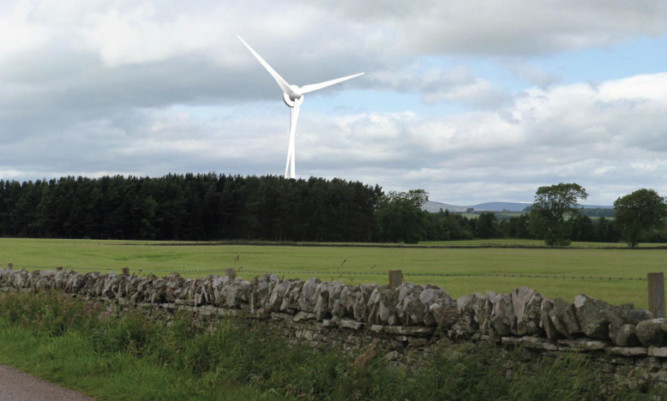An Angus Council committee has bunkered an appeal over a wind turbine overlooking a golf course.
Plans for the 250-foot turbine by the 10th hole of Forfar Golf Course, Cunninghill, were refused by the local authority in July and a meeting of the council’s development management review committee has upheld the original delegated decision, which split local opinion.
Agents for the applicant, AD Craig of Brechin, applied for a review at local government level, following an unsuccessful Scottish Government appeal in June.
The committee was attended by five councillors chairman David Lumgair, Bill Bowles, Jeanette Gaul, Alex King and Bob Spink.
After a site visit, they decided to back the planning department’s decision.
A letter from the council’s legal chief Sheonagh Hunter, seen by The Courier, has advised respondents of their reasons.
She states: “The DMRC acknowledged that there were a limited number of properties with principal views affected by the proposals and that mature planting along roads would screen the proposals to some extent.
“The DMRC concluded that there was at least one property with a principal view affected by the proposals and that there would be an unacceptable landscape and visual impact.
“The DMRC further considered that the proposed turbine, its associated infrastructure and access track would result in the loss of trees on site and would be unjustified and unacceptable.”
The Cunninghill course was designed in 1871 by Old Tom Morris, and improved by James Braid in 1926. Planning permission was sought for a single 500kW turbine with a 200m track from the public road, a crane pad and control box.
Thirty-six letters of representation were received at the application stage, 17 of which objected to the proposal and 19 supported it.
Harmony Energy filed an appeal with the Directorate for Planning and Environmental Appeals in a bid to save the project, which council officials argued would have unacceptable prominence in the landscape and be too close to housing.
AD Craig’s application on behalf of its client was refused, on the grounds that government reporters have “no remit” to consider the case as the appeal was out of time.
